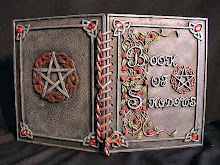 In Norse mythology, Freya is a goddess of love and fertility, and the most beautiful and propitious of the goddesses. She is the patron goddess of crops and birth, the symbol of sensuality and was called upon in matters of love. She loves music, spring and flowers, and is particularly fond of the elves (faeries). Freya is one of the foremost goddesses of the Vanir.
In Norse mythology, Freya is a goddess of love and fertility, and the most beautiful and propitious of the goddesses. She is the patron goddess of crops and birth, the symbol of sensuality and was called upon in matters of love. She loves music, spring and flowers, and is particularly fond of the elves (faeries). Freya is one of the foremost goddesses of the Vanir. Goddess of sex, battle, and pleasure, most beautiful and desirable of white-armed women, Freyja was sister to the male fertility god Freyr. Freyja had unusual parity with Odin, for they divided the heroic dead amongst themselves. Half went to live eternally in Odin's hall, and half in Freyja's hall Sessrumnir- and the goddess got first pick.
As befits a goddess, Freyja owned potent magical equipment. Like Frigg, she possessed a falcon skin, which when pulled over her shoulders, allowed her to take the form of that raptor.This also provided a useful disguise when needed - important to a goddess whose personage made her instantly recognisable.
Freyja's most wonderful adornment was her necklace (or possibly a jewelled belt), Brisingamen.It was crafted by four dwarfs, and was of exceptional beauty.Freyja so longed for it that she consented to spend one night each in the arms of its makers as her payment.This was a just recompense in the eyes of the goddess, for as the necklace was the finest of all things the dwarfs could produce, the utter summation of their skill, why not repay them with an equally precious example of her love-art?
Freyja always wished to give her love freely.Her beauty and desirability often attracted the attention of those she did not want, such as the giant who offered to build an impregnable defensive wall around Asgard, the dwelling of the gods, in exchange for taking Freyja away as his wife. The goddess knew nothing of this agreement, and her outraged indignation at being so wagered grew the greater as the wall grew taller. Never believing they would have to forfeit Freyja, the gods grew more and more uneasy in their wager, until Loki ,who had urged the agreement, was forced to utilise his trickster ability to the fullest.
Three animals are associated with Freyja. She is pulled about in a cart to which two cats are harnessed. Their sinuous beauty and comfort-loving nature recall one side of the goddess. The other two animals are direct symbols of sexuality and strength.
Her golden-bristled boar is called Battle Swine (Hildisvini), and recalls her role as the receiver of heroic dead. Battle helmets topped with iron and bronze images of boars have been found throughout England and Scandinavia, for the boar's savage and cunning nature was widely revered. The other animal is the mare, associated with night, unbridled sexuality, and dangerous magical power. To "ride the night-mare" meant then, as now, to have bad dreams.












0 comments:
Post a Comment